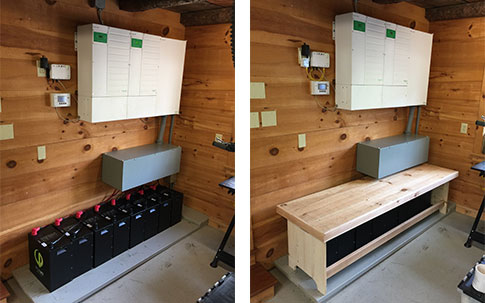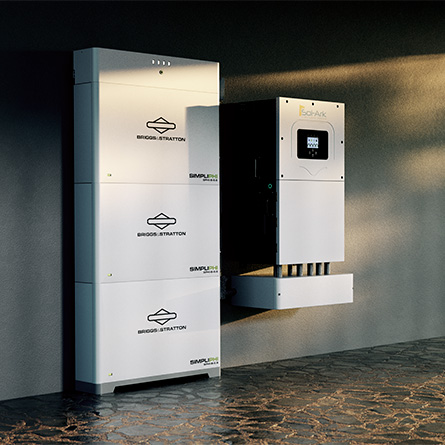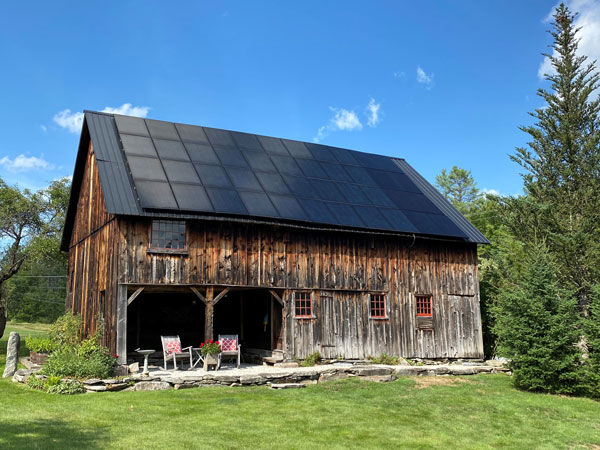For Bob Wells and his wife, Barbara, living in the bucolic but remote Green Mountains of Vermont comes with a few challenges.
“We've had power outages due to wind, the cold and snow,” says Bob. “Each year, we’ll have a handful of minor episodes and one major outage, and they usually happen in the dead of winter. One time we went for four days without power.”
The Wells were early adopters of battery storage and had been using a system that stored power from the grid since 2010. In 2017, they decided to add solar to generate their own electricity. As they began talking with Bill Laberge, owner of Grassroots Solar, it became clear they would need a new inverter and battery system.
“We had dual objectives for adding solar,” says Bob. “We wanted to do something environmentally conscious and get rid of our onerous electric bills.”
The Wells live in a historic, older home that can be found in the area. It was originally built in 1812 and was added on to in 1840 and 1850 and again in 2006 by the Wells.

Their classic English barn, which has been shored up over the years, was built in 1850 and now has 44 all black SunPower solar panels positioned on the south side of the roof. The Wells have an AC coupled system with a Schneider inverter and eight Briggs & Stratton PHI 3.8kWh batteries that have a total energy capacity of 30.4 kWh. The batteries are inverter agnostic and can be AC or DC coupled.
To retain the picturesque look of their historic homestead, the Wells painted the roof of their barn black and specified black solar panels. Inside Bob's workshop in the main house, a small custom-built bench covers the batteries while allowing air flow.
“Bob is in a vulnerable section of the grid so he wanted to have some energy autonomy,” says Laberge. “With older homes, there are usually challenges. In this case, it was the wiring but we worked with the original electrician and got everything figured out.”
The payoff for the Wells and their family has been significant.
“I don’t think we’ve had anything but a tiny electric bill in at least five years,” says Bob. “I use the solar app to figure out how much I’m getting out of my panels on a daily basis, and I get a credit from Green Mountain Power for anything I generate over my usage -- which helps balance electrical usage during winter months.”
With the extra power he produces, Bob is able to support a guest cottage on his property and even transfer a small amount of credits to his daughter and son-in-law who are also Green Mountain customers.
As part of the solar and battery system, Bob had another electrical panel installed and put essential items on it, including the furnace, refrigeration, water and certain lights and outlets.
“If we lose power, I can get three straight days from the batteries to these essential items. The sun usually comes out during that time and they recharge,” says Bob. “I don’t really think about them much because they don’t make any noise and they’re reliable.”
During the past 10-plus years, the Wells have been taking a number of steps to do things that are meaningful for the planet. They’ve changed to LEDs, have a heat pump for half of their main house and all of their guest house, plus have installed wiring for an EV.
“While we’d like to get an EV, the biggest stumbling block is the fact that we need all wheel drive and a vehicle that’s high enough off the ground because of snow and ice we get here in the Green Mountains. I’m sure we’ll get one at some point,” says Bob. “All-in-all, we’re trying to do our part to shift to renewable energy.”

Ready to experience true energy independence?
Request a consultation with a Briggs & Stratton dealer or installer near you by clicking the button below.



